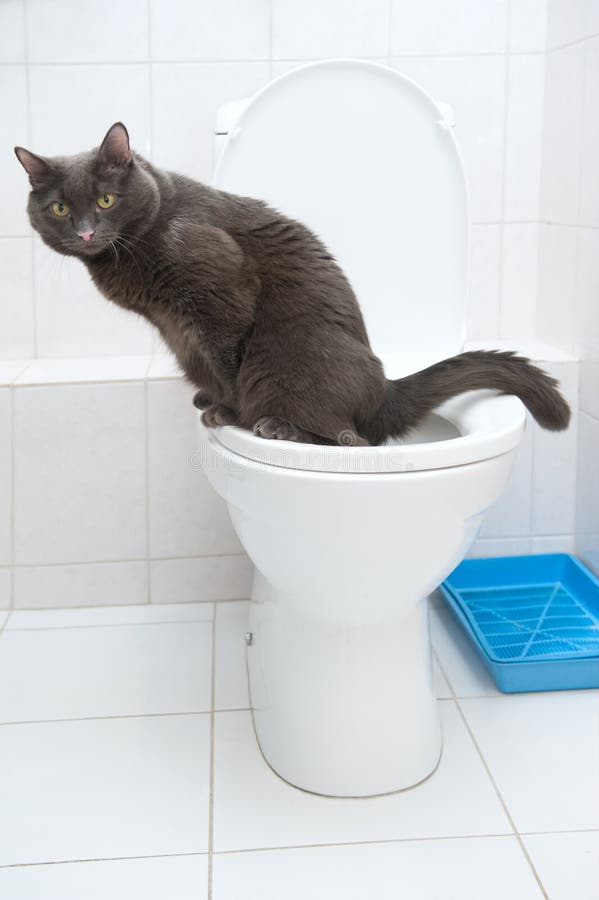The Dangers of Flushing Animal Waste Down the Toilet
The Dangers of Flushing Animal Waste Down the Toilet
Blog Article
We have come across this great article on Why you should never flush dog poop down the toilet directly below on the web and thought it made good sense to discuss it with you over here.

When it comes to disposing of waste, specifically animal waste, many individuals commonly turn to the convenient alternative of flushing it down the commode. Nevertheless, this apparently simple service can have serious effects for the atmosphere and public health. In this article, we'll discover why flushing animal waste down the commode is a bad concept and offer alternative approaches for proper disposal.
Intro
Appropriate garbage disposal is vital for maintaining environmental sustainability and public health. While it might seem safe to flush animal waste down the commode, it can result in numerous issues, both for the setting and human well-being.
Threats of flushing animal waste
Ecological impact
Flushing pet waste introduces unsafe bacteria and virus into rivers, which can negatively influence aquatic environments. These virus can contaminate water resources and injury marine life, interrupting delicate ecological communities.
Public health issues
Pet waste has damaging microorganisms such as E. coli and Salmonella, which can pose major wellness threats to people. Purging pet waste down the toilet can pollute water materials, bring about the spread of diseases and infections.
Alternatives to flushing
Instead of flushing animal waste down the bathroom, there are several alternate disposal techniques that are extra eco-friendly and hygienic.
Composting
Composting animal waste is an environmentally friendly method to throw away it. By composting, raw material is broken down into nutrient-rich soil, which can be utilized to fertilize gardens and plants.
Garbage dump disposal
Throwing away pet waste in a land fill is an additional alternative. While not as eco-friendly as composting, it is a safer choice to flushing, as it prevents the contamination of water resources.
Pet dog garbage disposal systems
There are specific animal waste disposal systems offered that safely and hygienically get rid of animal waste. These systems usually make use of enzymes to break down waste and get rid of odors.
Steps to proper animal garbage disposal
To ensure appropriate disposal of animal waste, follow these actions:
Scooping and nabbing waste
Regularly scoop and bag animal waste making use of biodegradable bags. This prevents waste from infecting the setting.
Utilizing assigned waste bins
Dispose of bagged animal waste in marked waste containers, such as compost bins or landfill containers. Avoid flushing it down the commode in any way expenses.
Cleaning litter boxes and pet dog locations frequently
Frequently clean can and pet dog locations to avoid the buildup of waste and microorganisms. Use pet-safe cleaning items to preserve hygiene.
Advantages of proper disposal approaches
Adopting correct disposal techniques for pet waste uses several advantages:
Decreased environmental pollution
Proper disposal approaches decrease the threat of environmental pollution, shielding rivers and ecosystems from contamination
Decreased danger of water contamination.
By avoiding flushing animal waste down the commode, the danger of water contamination is significantly minimized, protecting public health.
Boosted cleanliness and hygiene
Appropriate disposal approaches promote far better sanitation and health, creating a much safer setting for both humans and animals.
Final thought
Finally, flushing pet waste down the commode is damaging to the setting and public health. By adopting alternate disposal approaches and following appropriate waste management methods, we can decrease the negative effect of pet waste and contribute to a cleaner, healthier world.
What To Do With Dog Poo – The Do's And Don'ts Of Disposing Of Faeces
Dog poo bins
Some councils provide dedicated dog waste bins in popular dog-walking areas that can take dog poo that has been bagged but you can legally dispose of dog waste in any public litter bin, as long as it is securely bagged. This also applies to your wheelie bin at home.
Do not flush
Water companies do not recommend flushing dog faeces down the toilet because certain parasites can survive the water processing treatment and are potentially harmful to humans. You should also never consider flushing dog poo that has been bagged down the toilet as the bags will not break down and instead create severe blockages in the sewage system.
In the woods
The Forestry Commission promotes a ‘stick and flick’ method for dealing with waste in the woods. This means finding a stick and using it to flick any poo from off the path so that it is out of the way of other walkers. You could also bury it as long as it is not in an area where there might be livestock.
Livestock
Parasites found in dog poo can be transmitted to livestock if they inadvertently eat infected faeces that has been left on grazing land. This could result in the death of sheep or abortion in cattle so you should always make sure you pick up your dog’s waste in fields where livestock could be present.

Frequently clean can and pet dog locations to avoid the buildup of waste and microorganisms. Use pet-safe cleaning items to preserve hygiene.
Advantages of proper disposal approaches
Adopting correct disposal techniques for pet waste uses several advantages:
Decreased environmental pollution
Proper disposal approaches decrease the threat of environmental pollution, shielding rivers and ecosystems from contamination
Decreased danger of water contamination.
By avoiding flushing animal waste down the commode, the danger of water contamination is significantly minimized, protecting public health.
Boosted cleanliness and hygiene
Appropriate disposal approaches promote far better sanitation and health, creating a much safer setting for both humans and animals.
Final thought
Finally, flushing pet waste down the commode is damaging to the setting and public health. By adopting alternate disposal approaches and following appropriate waste management methods, we can decrease the negative effect of pet waste and contribute to a cleaner, healthier world.
What To Do With Dog Poo – The Do's And Don'ts Of Disposing Of Faeces
Dog poo bins
Some councils provide dedicated dog waste bins in popular dog-walking areas that can take dog poo that has been bagged but you can legally dispose of dog waste in any public litter bin, as long as it is securely bagged. This also applies to your wheelie bin at home.
Do not flush
Water companies do not recommend flushing dog faeces down the toilet because certain parasites can survive the water processing treatment and are potentially harmful to humans. You should also never consider flushing dog poo that has been bagged down the toilet as the bags will not break down and instead create severe blockages in the sewage system.
In the woods
The Forestry Commission promotes a ‘stick and flick’ method for dealing with waste in the woods. This means finding a stick and using it to flick any poo from off the path so that it is out of the way of other walkers. You could also bury it as long as it is not in an area where there might be livestock.
Livestock
Parasites found in dog poo can be transmitted to livestock if they inadvertently eat infected faeces that has been left on grazing land. This could result in the death of sheep or abortion in cattle so you should always make sure you pick up your dog’s waste in fields where livestock could be present.

I ran across that piece on 4 Reasons Why Dog Poop Cleanup is Important while doing a search on the search engines. Enjoyed our posting? Please quickly share it. Help other people find it. Many thanks for your time. Kindly check our blog back soon.
Book Maintenance Report this page